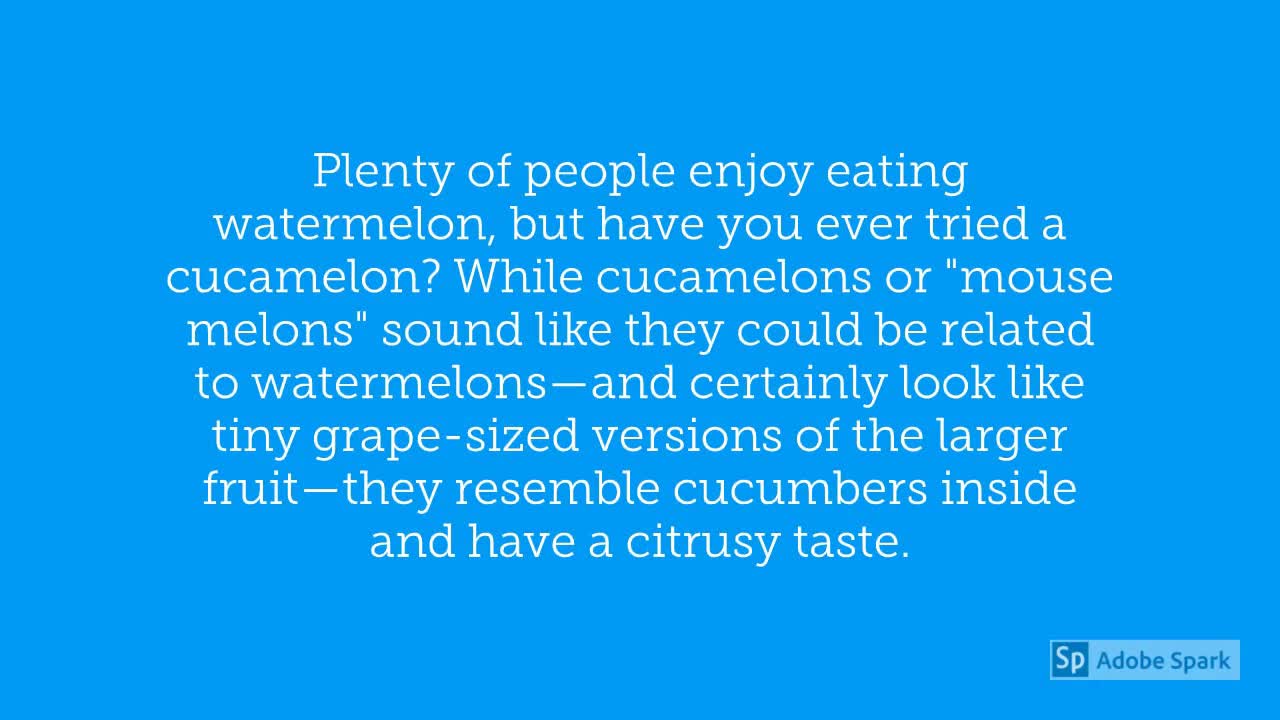Premium Only Content

Mind Blowing Facts : Cucamelons
Melothria scabra, also known as the cucamelon, is a vine grown for its edible fruit. Fruits are about the size of grapes and taste like cucumbers with a tinge of sourness. Vernacular names include mouse melon, Mexican sour gherkin, cucamelon, Mexican miniature watermelon, Mexican sour cucumber and pepquinos.
This plant is native to Mexico and Central America,[3] where it is called sandita (little watermelon). It is believed to have been a domesticated crop before Western colonization of the Americas began.
These plants are slow-growing when they are establishing themselves, but can eventually grow up to ten feet under proper conditions. They are drought resistant and pest-resistant relative to other cucumbers.[4] Similar to the cucumber, these plants are monoecious, producing both male and female flowers on the same plant. These plants can pollinate themselves, but the individual flowers are not self-fertile. Flowers are small and yellow, about four millimeters in diameter. Fruits develop at the base of the female flower.
Not only do cucumelons look like adorable tiny watermelons, they also are packed with antioxidants, vitamins, and fiber. Check out how you can grow your own cucamelons.
Also known as a mouse melon, the Mexican sour gherkin, or by its Spanish name, sandiita (little watermelon), a cucamelon is the fruit of the Melothria scabra vine and is about the size of a grape. But despite the name, they're not actually a hybrid of watermelons and cucumbers. They do have a semi-hard rind with markings like a watermelon, but the entire thing is totally edible so you can pop them in your mouth for a burst of cucumber flavor with a sour twist. Think a cucumber and lime mashup. They're packed with nutrients making them both fun to look at and functional, and while they're native to Central America, they can easily be grown in most parts of the U.S.
-
 0:09
0:09
ViralHog
5 years agoMind Blowing Fly By Maneuver
98 -
 0:08
0:08
toffeethebunbun
6 years ago $20.34 earnedBunny magician performs mind blowing trick
124 -
 2:09
2:09
NowYouKnowEnglish
5 years ago5 Interesting Facts About Soaps
2.47K -
 28:59
28:59
WSYM
5 years agoCoronavirus: The Facts
29 -
 8:22
8:22
WPTV
5 years agoCoronavirus the Facts - Part 1
19 -
 4:54
4:54
WPTV
5 years agoCoronavirus the Facts - Part 2
24 -
 3:07
3:07
WPTV
5 years agoCoronavirus the Facts - Part 3
44 -
 3:33
3:33
WPTV
5 years agoCoronavirus the Facts - Part 4
22 -
 8:22
8:22
KJRH
5 years agoCoronavirus: The Facts pt 1
18 -
 4:55
4:55
KJRH
5 years agoCoronavirus: The Facts pt 2
14